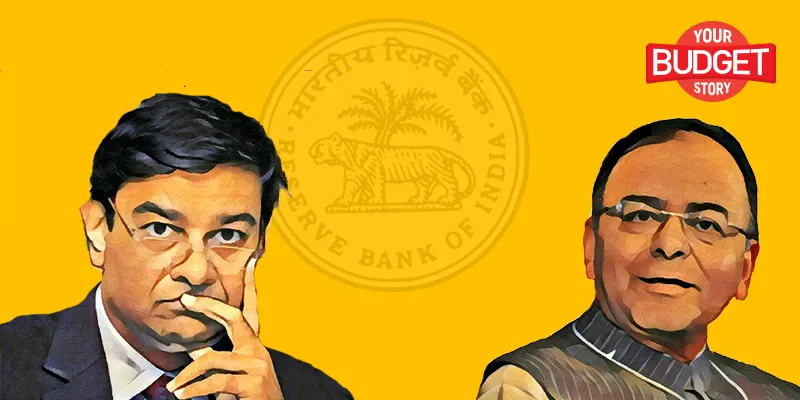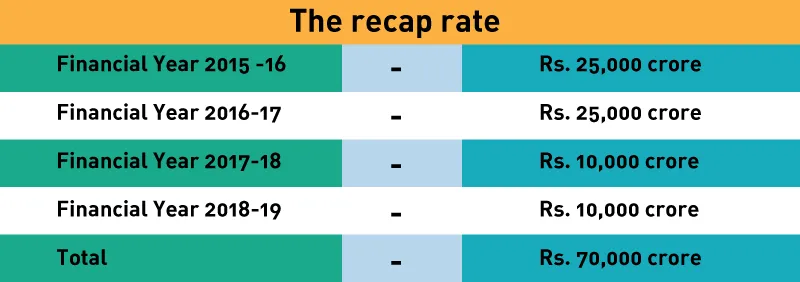Private equity may come to the rescue of capital-starved government banks
A new well of capital is out there; North Block has to be bold
A few paragraphs in Finance Minister Arun Jaitely’s Union Budget for 2017-18 on state-run banks will be of interest to India Inc., - the amount set aside for their recapitalisation. It will play a major role in how far and fast the economy can grow. But the larger point is whichever way you look at it, the Centre cannot for long continue to be a capital vendor - you need a new pool to tap into; and it can well be private equity capital.

Just look at the August 2015 announcement of the Indradhanush framework to transform these banks. It estimated that if we were to exclude the internal profit generation (based on the average profit of the previous three years), the capital guzzled over the next four years (till fiscal 2019) will be about Rs 1,80,000 crore. It was based on bank credit growth of 12 percent for fiscal 2016 and one that ranged between 12 percent and 15 percent over the next three years (depending on a bank’s size and growth appetite).

The big bet was that as the valuation of these banks improved with governance reforms, better dud-loan management and operational efficiencies plus sale of non-core assets, they will be able to mop up the additional Rs 1,10,000 crore from the bourses. While the Centre did promise additional budgetary support for these banks, it’s time to look ahead.
Beyond Indradhanush
It will be sometime before we can say with certainty the narrative at state-run banks has changed for the better. Just look at Mint Road’s Financial Stability Report (FSR, December 2016). It noted that the state-run banks trailed their private peers. Overall capital adequacy stood unchanged at 13.3 percent; at the systemic level, profit after tax shrunk on a year-on-year basis in the first half of 2016-17 due to higher provisions and loan write-offs, and a dip in net interest income. As a group these banks posted record losses; return on assets went up a tad to 0.4 percent from 0.3 percent; so too the return on equity at 5 percent from 3.2 percent.
Here are the killer lines in the FSR:
The asset quality of banks deteriorated further. Gross non-performing advances ratio (GNPA) was up sharply at 9.1 percent from 7.8 percent; and the overall stressed advances ratio (that includes restructured credits) was up at 12.3 percent from 11.5 percent.
What’s the story of state-run banks on the dud-loam front? They continue to register the highest GNPA ratio. The FSR says it may rise to 12.5 percent in March 2017 and then on to 12.9 percent in March 2018 (from 11.8 percent in September 2016), which could increase further under a severe stress scenario. That these banks may continue to record the lowest capital adequacy among all bank groups.
If these observations were not bad enough, the fallout is ominous:
Given the higher levels of impairment, banks may remain risk averse in the near future as they clean up their balance sheets and their capital position may remain insufficient to support higher credit growth.
Remember that almost 72 percent of the banking system's assets reside in the books of state-run banks. So simply put, operationally these banks are weak and have no appetite for credit until housekeeping is complied with.
Much has been made of the fact that the recent liquidity influx due to demonetisation will lead to cheaper loans and help India Inc. It’s a simplistic notion.
Since January, you have seen banks cut their marginal cost of funds based lending rate (MCLR); such advances account for 18 percent of banks’ loan book (the rest are linked to the base rate or BR). You now have a 100 basis points differential between the BR and the MCLR, so many borrowers switch over to the latter. The hiccup here is while marginal costs of funds has come down post-demonetisation, the overall cost of funds has not as older deposits have not been re-priced. So banks will continue to see margin pressure.
Add it all up. Connect the dots - does it make any sense to throw good money after bad when the government may well be under more strain due to demonetisation in the quarters ahead? Is it not time for a PPP model in our banking sector? Let private equity step in.
Bold thinking
Revisit differential voting rights (DVRs) to attract strategic investors who do not want management control, but look for reasonably big investments. It will offer both retail and institutional investors a variation, especially to those who may not be as particular about voting rights, but may see economic value in the form of higher discount offer that may be made; also for incremental dividend and capital gains. It provides a good mechanism for capital augmentation without impinging on the voting rights of the Centre.
The M. Narasimham Committee-II’s (1998) report on banking reforms was prophetic:
Given the dynamic context in which banks are operating, further capital enhancement would be necessary for the larger Indian banks. Against the background of the need for fiscal consolidation and given the many demands on the budget for investment funds in areas like infrastructure and social services, it cannot be argued that subscription to the equity of state-run banks to meet their enhanced needs for capital should command priority
It was suggested that the government cut its stake in these banks to 33 per cent. Is it time to revisit the proposal?
From within the establishment, sane voices have been for a reduction in the Centre’s stake in banks. In 2011, Montek Singh Ahluwalia, then Deputy Chairman of the Planning Commission, reacted to the OECD’s Second India Economic Survey, saying,
These banks with reduced government holding should no longer be governed by social objectives. Employees should have the same status as those in private banks. The corporate governance norms, too, have to be improved so that directors and chief executives are appointed by shareholders, and not the government.
In recent times, a Bank Investment Company (BIC) was mooted under North Block’s nose to ‘house’ shares of state-run banks to raise capital, a model in vogue in Singapore and the UK. Another route is for the Centre to divest stake to under 51 percent, yet retain the ‘public sector’ nature by way of a golden share in these banks? It may call for a narrower legalistic definition of the same; and the Centre has not yet opted for this route for management control. Point is once state-run banks reach threshold limits of shareholding (that is 51 percent), the idea may gather some leverage.
And we are nearing that tipping point. Indradhanush was more than about just recapitalisation of state-run banks; it was about a complete rehaul of their architecture. If the Centre feels it well on the path outlined, then the proverbial pot of gold may well be at the end of rainbow.
DVRs, BIC, golden share – it simply means PEs are at your doorstep. Please open the door!
What recap means for startups, entrepreneurs
Poorly capitalised banks can hit job creation in a big way. With the government receding from the employment market in the post-reform period, it’s up to the private sector to fill in the big gap – read SMEs, entrepreneurs and start-ups. While all of them can’t be bracketed together, we will give you a sense of what we are up against.
The 4th All India survey of Micro and small- and medium-enterprises (MSMEs) states that close to 90 per cent of this lot are dependent on informal sources, which by any standards is a worrisome figure.
According to Reserve Bank of India’s deputy governor A S Mundra, while some headway must have been made in improving MSMEs’ access to formal financial channels, it still remains a challenge. State-run banks have close to 3,000 specialised branches to lend to MSMEs. Private sector banks have built up products and processes, which enable quick disbursal of loans. Most banks have switched over to centralised credit sanctioning, which enables better turnaround time. Many others have increased the credit limits to the field level functionaries. While these steps have improved access, there is still a huge unmet demand for credit for MSMEs
Mundra had pointed out that there is total finance requirement of $650 billion in the MSME sector, which comprises of $520 billion in debt and $130 billion in equity demand. As per provisional data for period end-March 2016, total outstanding loan of the banking system to MSME sector stood at a third of the amounts needed spread over 20.6 million loan accounts; contrast this to the estimated need spread over 51 million such units.
Yet another aspect is outreach. Small entrepreneurs are spread across remote locations with no bank branches. The Banking Correspondent system is yet to mature to a level where they can play a key role in credit disbursal. Second and perhaps a more import dimension is availability of credit at a time when it is required by the entrepreneur. Ability of small entrepreneurs to withstand life cycle shocks is extremely limited and hence availability of timely credit becomes critical for their survival. The formal financial system, due to a variety of reasons, which may include cumbersome procedures, lack of understanding of the business model, inability of the entrepreneur to meet the requirements of the banks etc., is unable to meet this immediate need of the entrepreneur.
If banks continue to be poorly capitalised all these issues get compounded further. It’s only simpletons who say banks can or will set up private equity arms to fund entrepreneurs. Well, banks are not allowed to use depositor funds to do so. Globally too, many banking groups that have private equity businesses are rethinking this model; some may exit them. India can’t be an exception to this trend. Even to offer support services (non-fun based) to this new breed of capitalists, banks will first have to fill up their fuel tanks.
The bottomline – bank recapitalisation is more than just another book entry issue for the Centre. Far too much is at stake.







